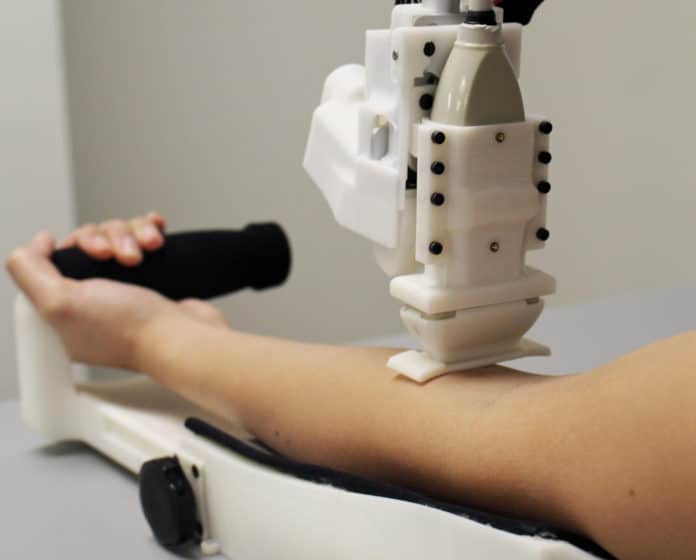In medicine, venipuncture or venepuncture, that is, the insertion of a needle into vein to take a blood sample or carry out intravenous therapy, is the most common clinical procedure. But sometime, when inserting the needle, problems may arise. Doctors fail in 27% of patients without visible veins, and in 60% of emaciated patients. And the repeated failures increase the likelihood of developing thrombosis and infection.
To solve this problem, a Rutgers-led team an automated device capable of venipuncture. The blood-sampling robot can help doctors quickly, safely, and reliably receive blood samples, preventing unnecessary complications.
This automated device includes an ultrasound image-guided robot that draws blood from veins, a module that handles samples, and a centrifuge-based blood analyzer. A fully integrated device could be used at bedsides and in ambulances, emergency rooms, clinics, doctors’ offices, and hospitals. It would allow healthcare professionals to spend more time treating patients in hospitals and other settings.
The device has already been tested successfully. According to the first human clinical trial, the blood-sampling robot performed as well or better than people, with an overall success rate of 87% for the 31 participants whose blood was drawn. For the 25 people whose veins were easy to access, the success rate was 97%.
In the future, the device may be used in procedures such as IV catheterization, central venous access, dialysis, and placing arterial lines. The team is currently working on refining the device to improve success rates in patients with difficult veins to access.
“A device like ours could help clinicians get blood samples quickly, safely and reliably, preventing unnecessary complications and pain in patients from multiple needle insertion attempts,” said Josh Leipheimer, a biomedical engineering doctoral student in the Yarmush lab, at Rutgers University-New Brunswick and the lead author of the paper published in the journal Technology.
